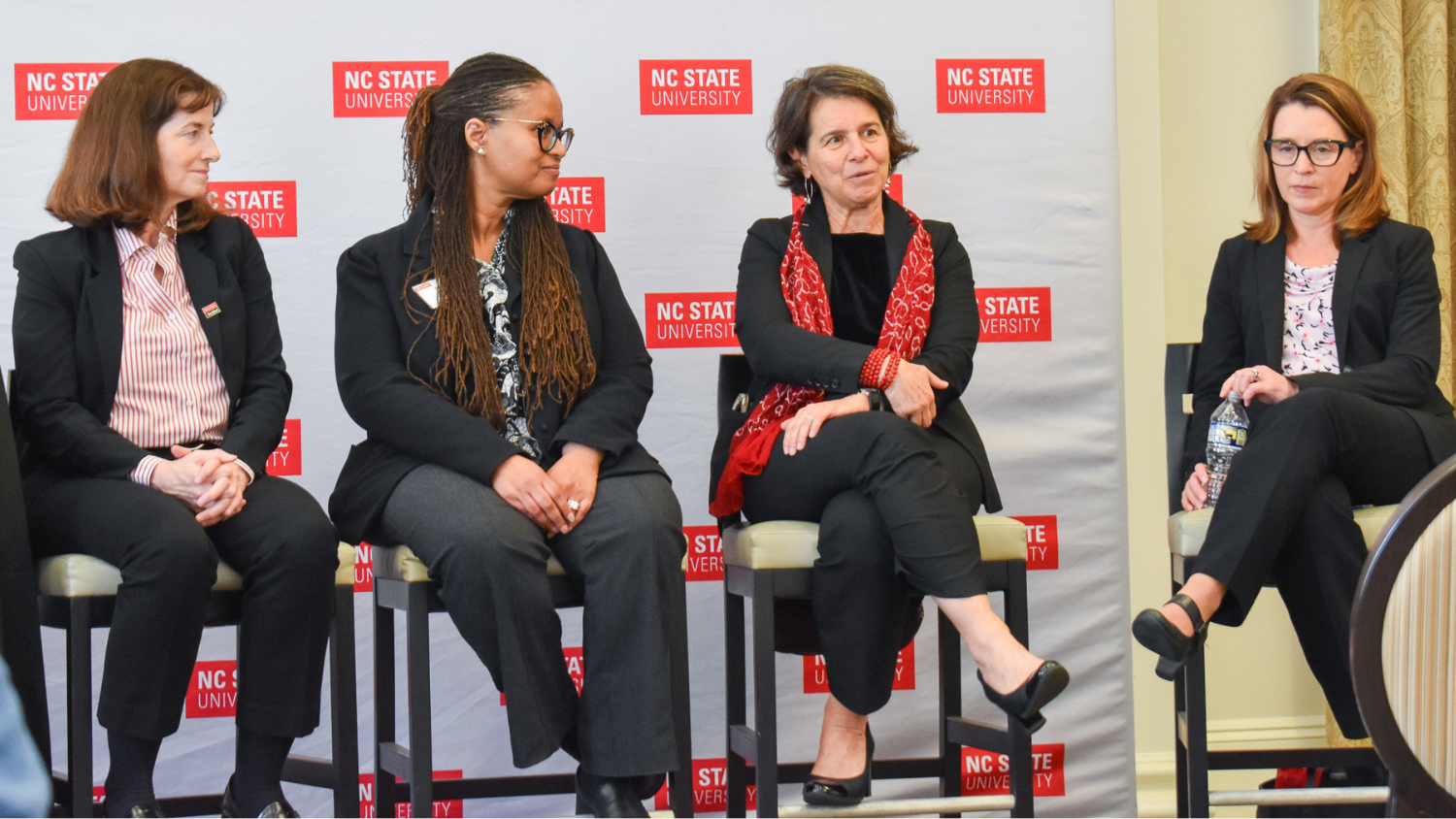Assistant Professor Jonee Wilson Will Support Teachers to Bring Equitable Mathematics Instruction into Classrooms Through National Science Foundation Grant

Jonee Wilson, an assistant professor of mathematics education in the NC State College of Education, has watched countless hours of instruction from classrooms across the United States. But, she said, she and other researchers have rarely seen equitable mathematics instruction put into practice.
In order to help develop more classrooms that are designed to honor and empower students who have been historically underrepresented — including students who are Black, Latinx, emergent multilinguals or living in poverty — Wilson believes there is a need to bring what researchers are learning about equity and instruction into the context of mathematics classrooms.
She hopes to further this work through a new four-year National Science Foundation DRK12 grant entitled “Supporting Teachers to Develop Equitable Mathematics Instruction Through Rubric-based Coaching.” Wilson will receive $1,146,432 in funding from the grant, which totals $2,997,077.
“It has been well documented that the current educational systems in the U.S. have not been designed to honor, empower or address the needs of all students. At the same time, there have been theories developed around race, culture, identity and belonging and the ways they play a role in teaching and learning,” Wilson said. “Despite the evidence being collected and the theories and pedagogies being outlined, there appears to be a need to support educators in taking up what we are learning in our research and making appropriate applications in their practice.”
Wilson’s new project, which is in collaboration with the University of Delaware and Harvard University, will bring together the Mathematical Quality of Instruction (MQI) coaching model — which uses one-on-one individualized, intensive and sustained work between instructional coaches and teachers to improve instructional quality by incorporating iterative cycles of recording, analyzing, discussing, reflecting, planning and implementing instruction — and the empirically developed Equity and Access Rubrics for Mathematics Instruction (EAR-MI).
Wilson’s work on the EAR-MI project identified seven common practices of teachers in classrooms characterized by high-quality teaching and where African American and emergent multilingual students showed better growth on mathematics achievement tests than would be predicted by their prior performance.
Through the new project, the EAR-MI rubrics will be integrated into the MQI Coaching model with 24 middle grades mathematics coaches who support 72 teachers in grades 5-8. Wilson and the team of researchers will then measure the effects of the coaching model on teachers’ beliefs and instructional practices, and on students’ mathematical achievement and sense of belonging in math classrooms.
The project will also investigate how teachers’ attitudes and beliefs impact their participation and what teachers take away from engagement with the coaching model.
“Because a teacher’s own identity and beliefs inform how they engage with students, self-reflection is key to supporting teachers’ development of equitable mathematics instruction,” Wilson said. “By leveraging the routines and structures from an existing and effective rubric-based coaching model and grounding them in equity-oriented instructional practices, this new coaching model has great potential to present an example of a self-directed program that provides opportunities for teachers to centralize issues of equity, reflect on their own beliefs and biases, and prioritize equitable practices while taking specific action to plan instructional change.”
Wilson said that the development of this new coaching model for teachers is important because improving issues of equity in mathematics extends beyond attending to student achievement and addressing student access.
Teachers’ instructional practices, she said, can influence the extent to which all students have an opportunity to see themselves in a problem they must solve as a class, the extent to which students develop strong relationships with their teachers, the ability for students to see their culture and languages as resources from which they can draw from while doing math, the affirmation of students’ identities as mathematicians and the extent to which students are empowered to use mathematics in examining and critiquing the world around them.
“Classroom instruction and students’ interactions with their teachers are pivotal to the ways students experience classroom mathematics,” Wilson said. “I’m excited that we have incorporated opportunities for students to describe the extent to which they feel a sense of belonging, to share information about their developing mathematical identities and to reveal their own perceptions of their ability and confidence in mathematics”
In addition to this new grant-funded project, Wilson is also the principal investigator on a $2.3 million National Science Foundation-funded project to validate the EAR-MI rubrics with the goal of improving mathematics access for African American and emergent multilingual students.
That “Validation of the Equity and Access Rubrics for Mathematics Instruction (VEAR-MI)” project links the seven instructional practices identified in the EAR-MI project to student achievement and participation, and takes steps to specify and measure practices that are necessary to adequately support those who have been historically underserved in K-12 mathematics.
Through the course of the VEAR-MI project, Wilson said she and the research team have learned more about the seven practices as well as how to identify them in other classrooms and how the practices relate to one another.
The team has also confirmed that, although the common practices were outlined based on observations in middle school mathematics classrooms, they do not appear to be grade-specific. The team has observed each of the practices in elementary and secondary mathematics learning environments, Wilson said.
In the next phase of the VEAR-MI project, Wilson said that she looks forward to exploring how scores from the EAR-MI rubrics are related to other indicators of teacher expertise, such as teachers’ Views of Students Mathematical Capabilities (VSMC) and the Mathematical Knowledge for Teaching (MKT). Additionally, the team will also be able to closely examine whether teachers who scored higher on the EAR-MI rubrics had students who made more significant gains in mathematics standardized tests.
- Categories:


